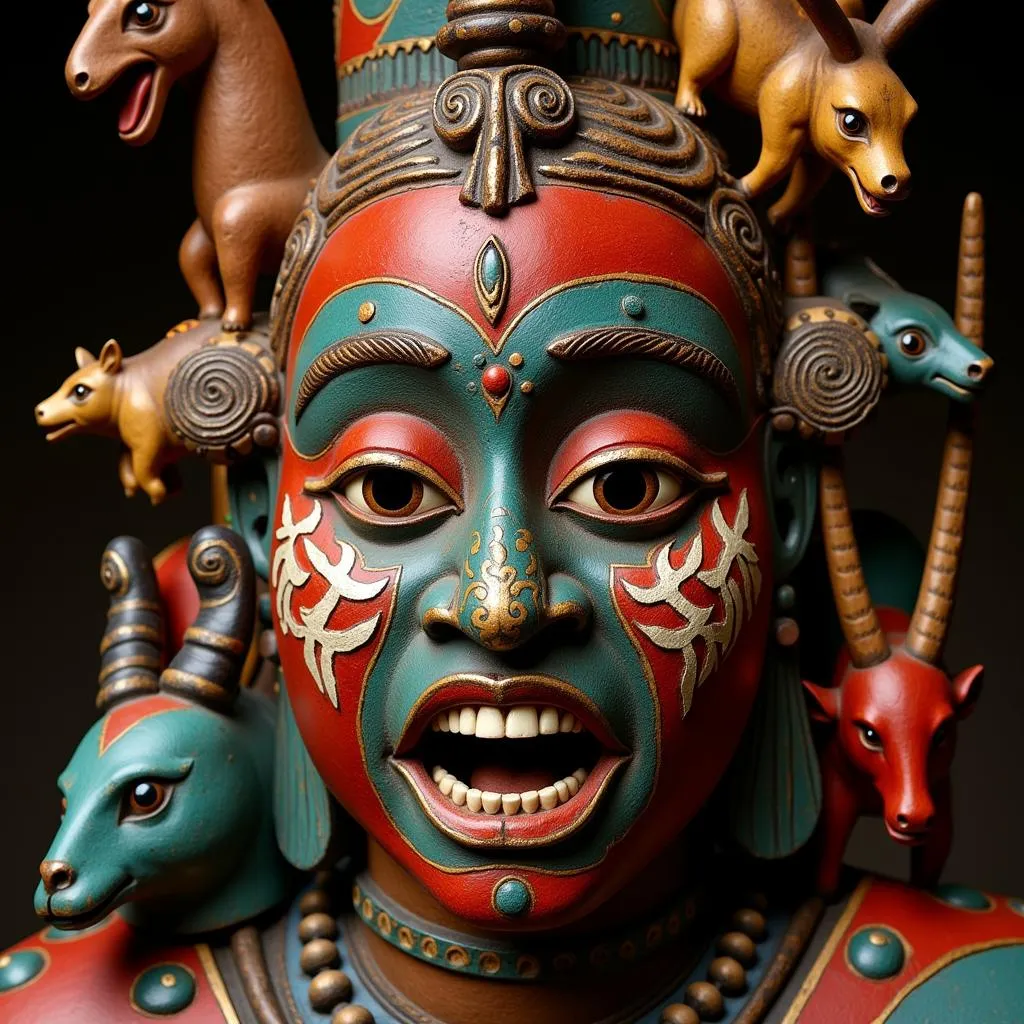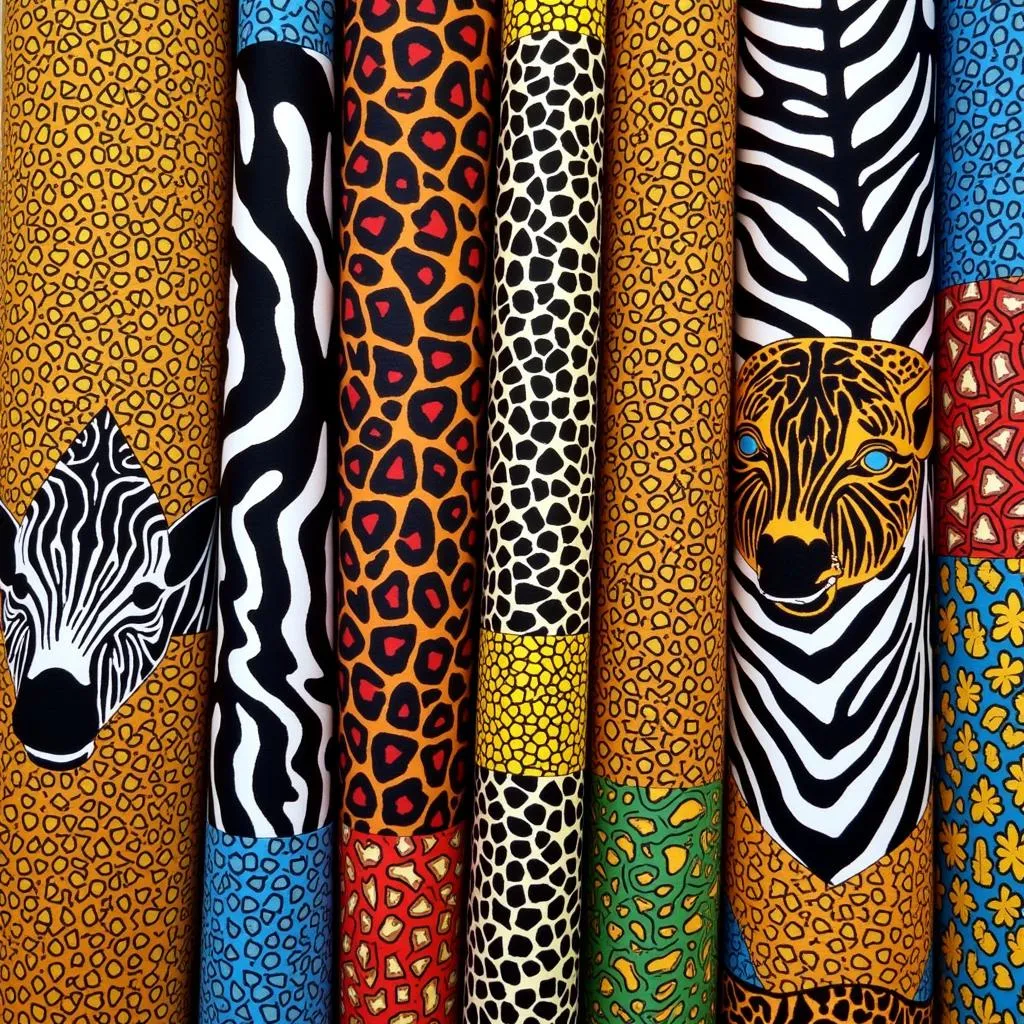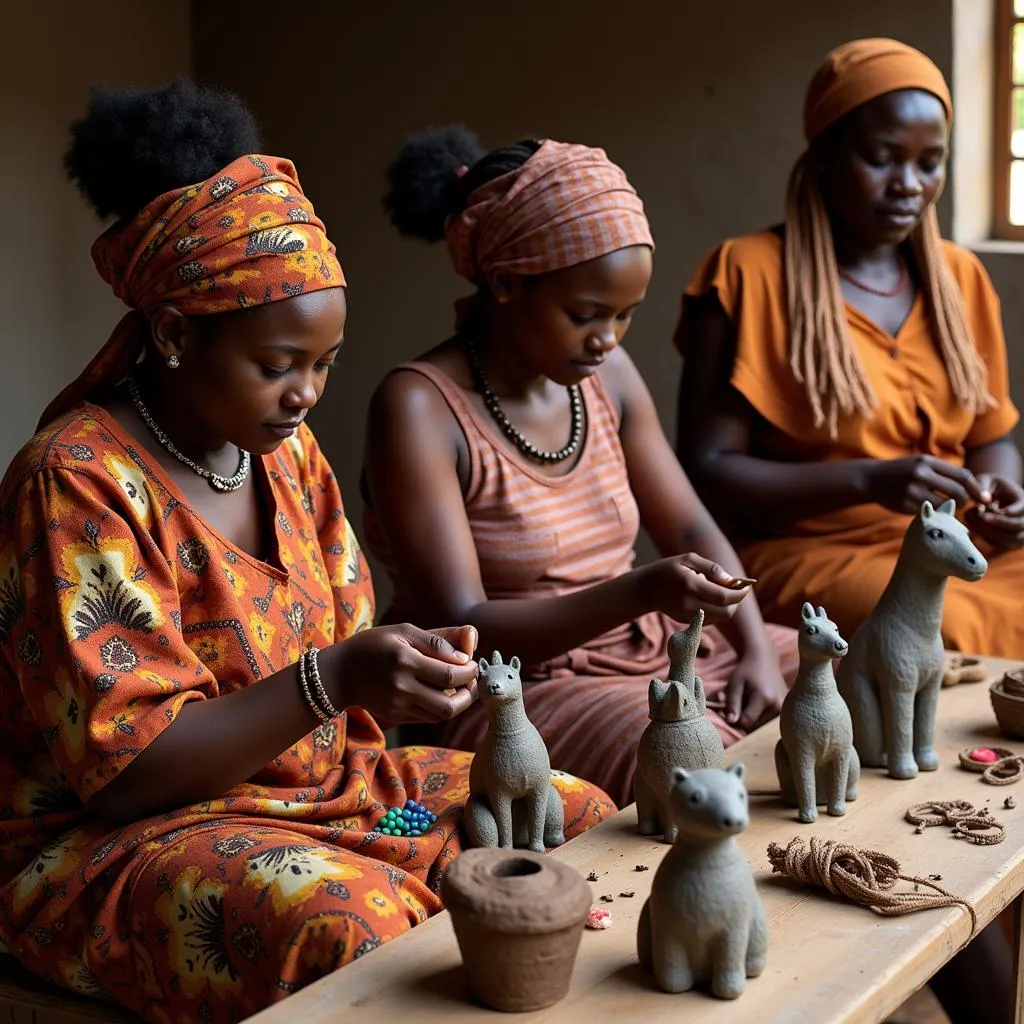African Animal Crafts are more than just decorative objects; they are vibrant expressions of creativity, storytelling, and cultural heritage. From the intricate beadwork of the Maasai to the bold, wooden sculptures of the Makonde people, these crafts offer a glimpse into the diverse cultures and deep connection with nature that defines the African continent.
 African Mask with Animal Motifs
African Mask with Animal Motifs
The Significance of Animals in African Culture
Across Africa, animals hold a significant place in cultural beliefs, mythology, and daily life. They are often seen as totems, representing strength, wisdom, cunning, or other admired qualities. This deep respect and reverence for the animal kingdom are directly reflected in the craftsmanship of various ethnic groups.
For example, the Ashanti people of Ghana believe that spiders are wise creatures, often associated with storytelling and weaving intricate tales. This belief translates to their craftmanship, with skilled artisans crafting intricate golden pendants shaped like spiders, showcasing the revered status of the creature in their culture.
 African Textiles with Animal Prints
African Textiles with Animal Prints
Popular Materials and Techniques
African animal crafts utilize a wide array of readily available materials, reflecting the resourcefulness of the artisans and the continent’s diverse landscapes.
- Wood: From majestic elephants to fierce lions, wood carving is a predominant art form in many African countries. Skilled artisans use simple tools to transform blocks of wood into stunning sculptures, masks, and everyday objects, each imbued with cultural significance.
- Beadwork: The vibrant colors and intricate designs of Maasai beadwork are instantly recognizable. These beads, often made from glass, bone, or clay, are painstakingly strung together to create necklaces, bracelets, and other adornments that often feature stylized animal motifs.
- Textiles: Across the continent, fabrics are brought to life with intricate animal patterns. From the batik prints of West Africa, featuring stylized depictions of animals like crocodiles and snakes, to the vibrant kente cloth of Ghana, these textiles showcase the beauty of African artistry.
A Window into Wildlife Conservation
In recent years, African animal crafts have played a crucial role in promoting awareness about wildlife conservation. Many artisans are actively involved in initiatives that support sustainable practices and raise awareness about endangered species.
“By incorporating endangered animals like the black rhino or the pangolin into our designs, we are starting a conversation about the importance of protecting these creatures,” says Adjoa, a textile artist from Ghana. “Our crafts become a powerful tool to educate and inspire action.”
 African Women Making Animal Crafts
African Women Making Animal Crafts
Exploring African Animal Crafts: Where to Start
Whether you are an art enthusiast, a conscious shopper, or simply intrigued by the beauty of African culture, exploring the world of animal crafts offers a rewarding experience.
Here are a few ways to immerse yourself:
- Visit local markets and craft fairs: When traveling in Africa, make sure to visit local markets and craft fairs. These vibrant spaces offer a chance to interact directly with artisans, learn about their techniques, and find unique pieces to treasure.
- Support ethical brands: Many organizations and brands work directly with African artisans, ensuring fair trade practices and sustainable sourcing. Supporting these brands ensures that artisans are fairly compensated for their skills and that cultural heritage is preserved.
- Learn the stories: Each craft tells a story, reflecting cultural beliefs, myths, and traditions. Take the time to understand the symbolism behind the animal motifs, the materials used, and the inspiration behind each piece.
By appreciating and supporting African animal crafts, we not only celebrate the continent’s rich artistic heritage but also contribute to the preservation of cultural traditions and the conservation of its incredible wildlife.
Leave a Reply